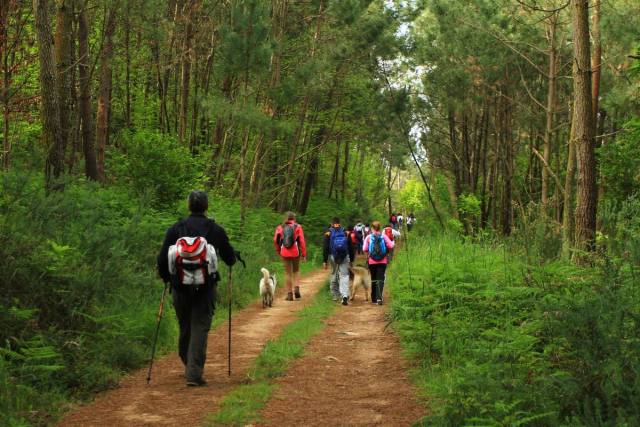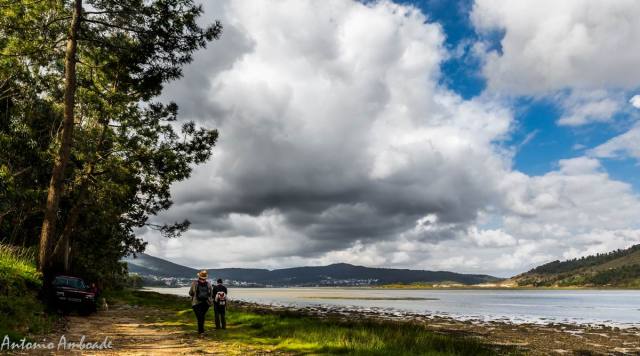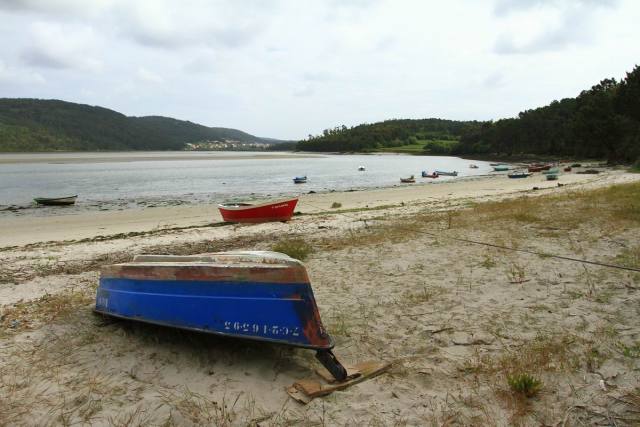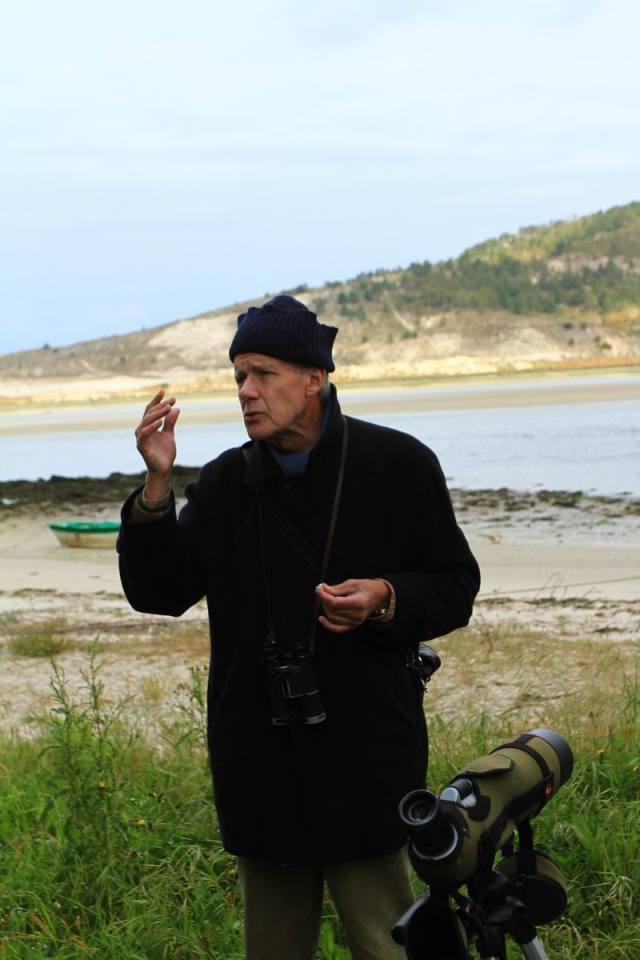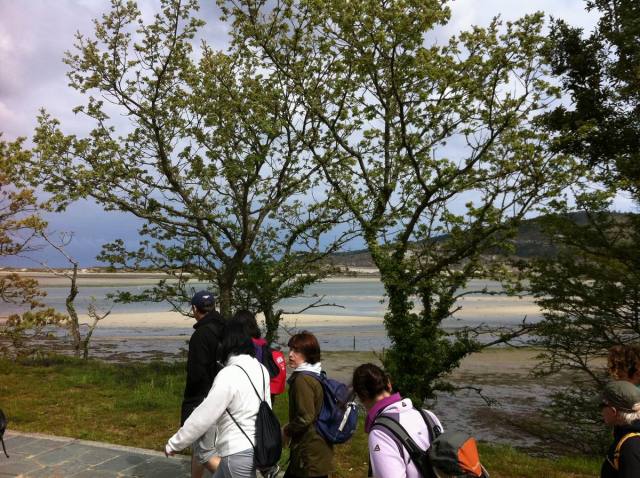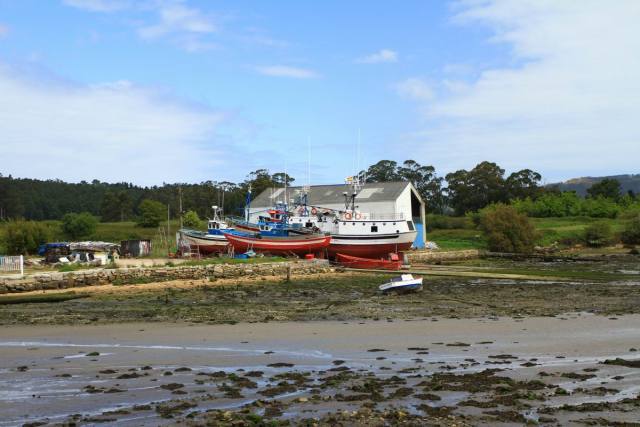This 3rd stage starts by walking along this amazing landmark, the estuary of the river Anllóns. The first kilometers is carried out by leaving the bridge of Ponteceso by taking the main road till we reach the factory Apligasa, from where we will take the right one that will lead us to a broad forest walk to the mouth of the river.
This is a very rich area and the livelihood-sustaining asset of the shelfish gatherers that look for the cockle and also of the great amount of birds that rest along their migrations as it is a calm place where there are no predators and it is full of small invertebrates they feed upon.
And it is there, at the beach of Urixeira, next to the small observatory place, where the trasnos met José Luis Rabuñal Patiño. This ornithologist is the only authoritative voice to speak about this ecosystem, as he has been walking along it since the 70s, when he discovered that this estuary was the door for the birds flying form the States to get into Europe.
Since then, he has spent his life watching their migrations with more than 3500 visits documented. Not only is he a source of information but also he is a very good speaker. Just listening to him describing the flight of a 20-grame bird that flies across the Atlántico more than 10000kms without any stop, eating or sleeping is one of the presents this Camiño dos Faros gives us away.
From the beach Urixeira, the Path of Anllóns starts, a path that goes along the mouth of the river Anllóns, the bay Insua reaching the beach Lodeiro. In total, they are 3 kilomters along which you could see a lot of fauna and flora which makes this place be amazing.
Apart from its natural environment, the route takes us to some of the old shipyards where ships of wood were built that still exist nowadays. In the 20th century, loads of fishing and coasting vessels left from the shipyard of A Telleira. They are small shipyards where vessels are built and repaired in a craftsmanship way. Currently, there are still 3 (O Baladiño, O Tecelán e Roseva). They are one of the ethnographic treasures of the area.
When we reach the beach Lodeiro in As Grelas, which is actually the end of this path, we go across the road and it is then when the landscape radically changes again.
O Camiño dos Faros goes along the coastline whenever is possible, but in this stage we will walk 10 kilometers inland as it is worth doing it. We will ascend by taking the Route do Rego dos Muíños to see the Castro A Cibda and the Dolmen in Dombate, two archaeological treasures in A Costa da Morte, to finish the route in the Mount Castle of Lourido, the best viewpoint above the Ría with its 312-meter height.


